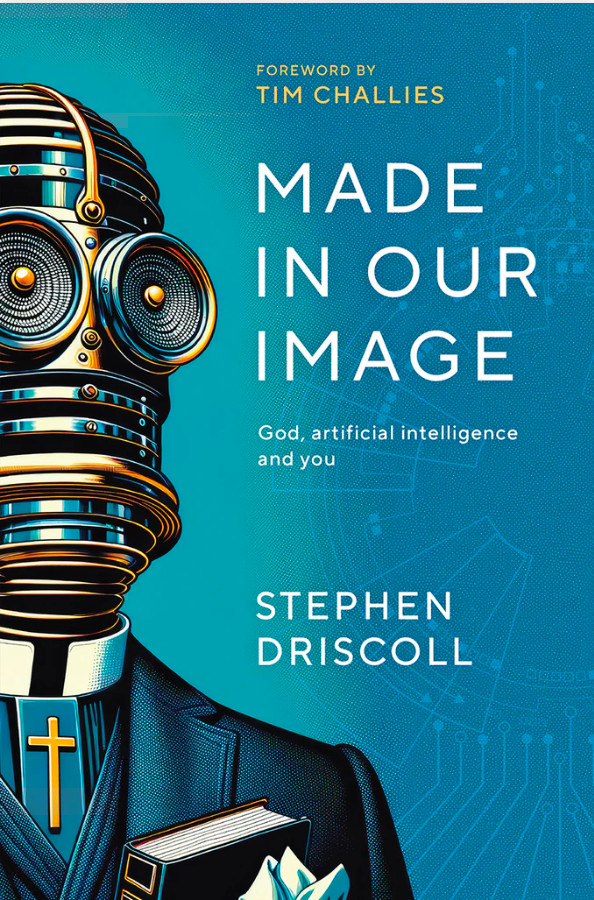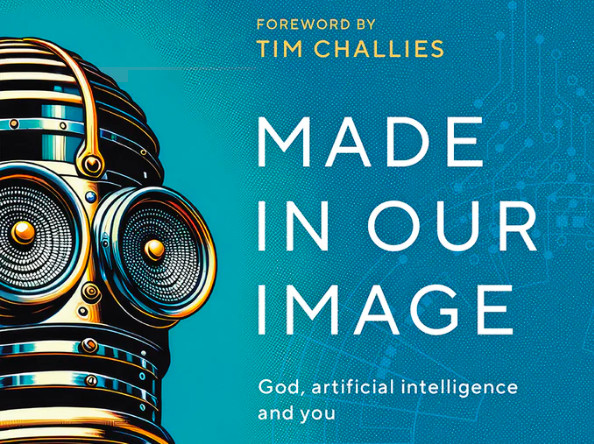In an excerpt from a new book Made in Our Image Stephen Driscoll explains why he believes computers have been taught to learn – and that this has earned them the right to be thought intelligent. Driscoll describes the moment Artificial Intelligence was demonstrated to the world. In 1997 Chessmaster Gary Kasparov had been beaten by IBM’s Deep Blue, a computer that could calculate all the options to make the next move, picking the one that would give the best chance of victory.
Driscoll sees this as demonstrating the brute power of a computer evaluating 200 million possible moves per second. It could assess more possible moves than a human. But that was not the leap into AI.
But then computers took on the ancient Chinese game of Go.
The year 2016 was a more important and remarkable moment in the history of artificial intelligence than even 1997. Yet at a basic level, the events looked very similar. Replace Gary Kasparov with Lee Sedol. Sedol was perhaps the world’s greatest player of Go, an ancient Chinese game played by tens of millions of people, mostly in East Asia. In chess, you chose from 20 possible opening moves. In Go, you chose from 361 possible opening moves.
Now replace Deep Blue, the IBM machine of 1997, with AlphaGo, built by DeepMind (later to be acquired by Alphabet, the company that owns Google). Once you understand the difference between chess and Go, and between Deep Blue and AlphaGo, you’ll be half-way to understanding why modern AI is, in my view, a true creation of intelligence.
Let’s go back to Deep Blue, to 1997. How did that computer work? This will be the most technical part of the book, but I’ll try to keep it as simple as possible.
Deep Blue was a carefully programmed machine. It was built by collaboration between computer scientists and chess experts.
Basic principles of chess were programmed into the machine. The machine was then able to do what humans can’t: it could role-play millions of different options. It could think, quite literally, six or seven moves ahead, having considered enormous numbers of outcomes. It wasn’t perfect: it couldn’t think ten moves ahead, since at that point the number of possible options exploded rather quickly.
Consider this: if at any point I give you 20 options, and each of those options leads to 20 further options, and each of those options leads to 20 further options, you now have 8,000 options to consider. At this point, it’s not too difficult for a modern computer. But to think six moves ahead, we would need to consider 64 million options. Again, perhaps our computer can handle this. To think nine moves ahead would involve 512 billion options. Ten moves ahead equates to over 10 trillion possibilities. Each step is twenty times more difficult than the last. Even a supercomputer has limits.
Deep Blue couldn’t see all the way to the end of the game, but it could crunch a lot of numbers, follow basic principles written by experts, and arm-wrestle Kasparov into an exasperated submission.
AlphaGo faced a far more difficult challenge. To think only six steps ahead in Go, you would need to consider two quadrillion options. That’s two thousand trillion possibilities. The gameboard was just too large, the numbers of options too vast for brute force.
Expert Go players don’t sit and calculate; they see patterns and intuit. You can beat chess with brute force, but Go demanded creativity.
In the movie A Beautiful Mind the mathematician John Nash (played by Russell Crowe) gets frustrated after losing at Go. He can’t calculate his way to victory and ends up shouting “the game is flawed!”
But the game isn’t flawed; it’s just not winnable by mere calculation. For this reason, games of Go are unique. People have played for thousands of years, but each game is probably unprecedented. The exact combinations have never been seen before and will never be seen again, even if Go is played until the cooling of the sun.
In this way, Go reflects the complexity of the actual world better than chess. Our world is endlessly complex. A game of soccer is unique. Consider the exact bounce of the ball, the exact movements of the players. There might be recurring patterns, but no goal is ever exactly like another. Our world is too complex for repetition.
Come back to the much-hyped contest between Lee Sedol and AlphaGo. The moment that shocked people was ‘move 37’ in the second game. When move 37 was played, the commentator gasped. Lee Sedol stopped, unable to process what had happened.
What was so significant about move 37? Go is a game of placing black and white stones and gradually surrounding your opponent or capturing areas of the board. It had established patterns and strategies. But in move 37, the computer had placed a stone in a position no human would think to use. It was the sort of mistake an amateur might make—but up until this point the computer had played at a world-class level. So, was it a mistake? Or did the computer see something that humans couldn’t see?
The English commentator that day said, “I don’t really know if it’s a good or bad move”—not what you want from your expert analyst, particularly with 280 million people watching live. Sedol took 16 minutes to make his next move. Imagine the tension. Fan Hui, a three-time European champion, didn’t think it was a mistake. His response to move 37 was to start muttering: “So beautiful. So beautiful.”
AlphaGo hadn’t made a mistake. It had seen something deep in the patterns of Go, and it had been—I’m choosing the word intentionally—creative. Commentators had thought the contest was relatively even. They were wrong. In its internal calculations, AlphaGo was supremely confident of victory from halfway through the contest.
In other words, AlphaGo could see patterns that humans couldn’t see, think of moves that we’ve never considered. It knew it was winning even when we couldn’t tell.
Unfortunately for the human race, it gets worse. Just three years later, Google announced that the latest version of AlphaGo had beaten the machine that defeated Sedol 100 games to zero. Around that same time, Sedol announced his retirement from Go. “With the debut of AI in Go games, I’ve realized that I’m not at the top even if I become the number one through frantic efforts”, Sedol said. “Even if I become the number one, there is an entity that cannot be defeated.”
These utterly dominant machines were winning not by brute force, but by superior intuition. The neural networks were more than programmable calculators. They weren’t just good at what humans are bad at, exploiting Moravec’s Paradox. [The idea that some things are easy for machines but very hard for humans,while other things are easy for humans but very hard for machines.] AlphaGo was good at what we are good at. It was good at the very things—creativity, intuition, pattern recognition, strategic thinking—that are some of our greatest strengths.
It sounds like a big claim to assert that a computer is creative. So, what exactly is creativity? To start with, it’s not the same as chaos.
Chaos is spontaneous and novel, but it isn’t creative. Chaos is a step below expertise, while creativity is a step above. My dancing style is chaotic; Michael Jackson’s was creative.
Creativity is the application of deep principles of understanding from one area, in a significantly novel way in a new area, in such a way that the principles work in achieving an end. Apologies for the mouthful. But the point is that creativity requires deep understanding, a comprehensive grasp of principles. The great artists that break new ground have a mastery of what came before. They get it on a really, really deep level. They take that deep understanding and apply it in a new way, and in such a way that it works in achieving something.
In science, Einstein wasn’t chaotic. He wasn’t just throwing theorems at a wall. Einstein understood the state of physics so well that he could find principles and patterns that led him into an entirely new realm. The soccer player Ronaldinho, when pressed into corners of the pitch, would flick the ball and shift his body in novel, creative ways. He could do this because he had total mastery of the basics of football.
Move 37 was that sort of a moment. It was creativity born of total mastery. AlphaGo understood the game so deeply that it could do something novel and new, something that then significantly rewrote the tactics of the game. And it was probably in that moment that people started to realize that AlphaGo wasn’t just effective; it was intelligent.

AN excerpt from Made in Our Image: God, artificial intelligence and you
Stephen Driscoll, Matthias Media 2024 Available from The Wandering Bookseller $15.99

